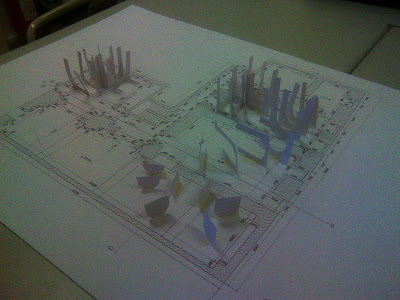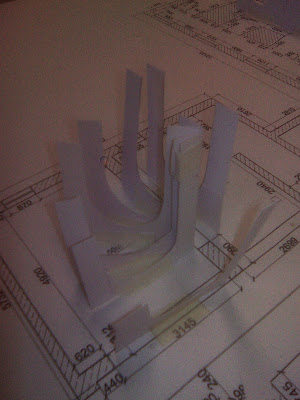Folding is a design process; design methodology using physical modeling. The creation of a relationship between material and structure, which produces from. This process started around the mid 20th century, and some important people who forms part of this section in design are: G. Deleuze; G.Lynn; Guattari; Claude parent.
Folding – design generator has 4 transitions:
Matter and Function: Matter the paper have one constraint, the continuity of the surface, but a series of transformations could be applied to it. Fold; press; crease; pleat; cut; twist; wrap; hinge; weave; compress and unfold.
Algorithms: Are recipes, step by step instruction of how to solve a problem.
‘When folding a piece of paper the series of transformations resulting into the paper fold artifact, is a genetic algorithm form’
Spatial organizational and structural: creating a structure with space and volume, whilst introducing topology and tessellations.
3D Prototype: The end product is a structure resulting from the whole process.
An interesting article regarding folding is found in the magazine AD 1993 "The fold: Leibniz and the Baroque: The pleats of matter."
These designs were not done by myself :) but shown during last Monday's lecture. I hope I will be uploading some of my experiments later on.






.jpg)

